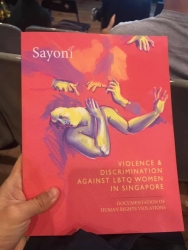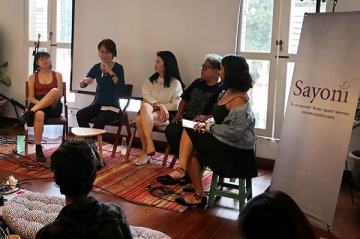This article got me laughing at various points. It gives a scientific edge to a phenomenon that was previously confined largely to pop culture.
For starters, the term “gaydar” is generally defined as the ability to identify members of the gay community. It is perceived as innate, not learned. Sentences like “my gaydar sucks” or “she has a fantastic gaydar; she can identify straight-acting gay men!” are often heard. The more normative a correctly identified gay person looks and dresses, the more skilled you are perceived to be. Now to the article…
Woolery (2007) wrote of gaydar as a cognitive high skill. Because sexual orientation is not something you know by simply looking at someone. And lesbians were found to be best at identifying gay folks when presented with only a photograph [compared to straight women and men, as well as gay men] according to Ambady, Hallahan and Conner (1999) and Berger, Hank, Rauzi and Simkins (1987). Gay men run second in line. Across all participants, the more information one was given, the greater the likelihood of “getting it right”. This edge over heterosexuals is only apparent when information is sparse e.g. a photograph without additional details. And this, argues Woolery, shows a “keener, more finely developed skill” among gay women and men.
The article goes on to suggest that gaydar is a form of impression formation, with several factors like experience, stereotypes, contextual factors etc coming into play. Since first impressions are categorical and heavily dependent on apparent physical cues, Ambady, Hallahan and Conner (1999) proposed that our superior gaydar is due to a better developed schema. [A schema is like a network of related ideas in your mind, such that thinking of one thing will spark out thoughts of related stuff.] I assume categories are like sex [female/male] and the like. So when we see someone with boobs [physical attribute], we think “female”.
So, those with wonderful gaydars are considered experts. And experts operate differently from novices: they know the most relevant features to look out for and they make quick judgements based on these to-the-point observations.
How do we develop a novice-gaydar into an expert-gaydar?
By apprenticeship! Apprenticeship can be formal or informal. Since no school has ever incorporated a module entitled “gaydar” into its syllabus, it’s fair to say that our apprenticeship occurs in our everyday life [informal learning process]. Social activities with lesbians and gays help develop one’s understanding of the gay culture, which has an impact on our ability to recognize gay individuals. Woolery supports this with the observation that gay folks who travel to countries with different cultures and those who come out later in life tend to have poorer gaydars.
When will gaydar cease to exist?
Woolery wrote that gaydar exists because of the need to solve a problem: we need to identify fellow gay members especially in oppressive environments. So she argues that in the best scenario i.e. no discrimination, the gaydar will cease to exist. [I don't know about that. Because it's not just discrimination that brings salience to a certain identity. There are other factors too. For example, if you are proud of your partner and your relationship, for example, your gay identity might remain salient, resulting in a desire to set yourself apart. Hmm... i guess it might come true if the whole world is gay. Then gay signals will no longer be useful as markers of differences.]
So hurray ladies, we are highly skilled experts!
Main article:
Woolery, L. M. (2007). Gaydar: a social-cognitive analysis. Journal of homosexuality, 53(3), 9-17.
[All references in this post come from this article.]



